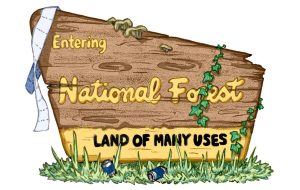IPECC begins work on new Native Outreach Program
April 21, 2022
The Indigenous People’s Education and Culture Club (IPECC) is in the process of building a new Native Outreach Program on campus. IPECC is hoping to collaborate with the Whitman College Advisory Council for CTUIR Collaboration (WCACCC) and the Admissions Office.
IPECC Treasurer Jaden McGinty ‘23 says the program is a student-led initiative and concrete plans are still under construction.
“It is important to recognize that, as it is now, Whitman is not a good fit for Indigenous students,” McGinty said. “Whitman has incredible resources of money, administration and faculty that could serve Indigenous communities in the area. We are trying to figure out ways to change campus to better help and support Indigenous students.”
According to the Fall 2021 Enrollment Report, there are currently four Native-identifying students enrolled at Whitman. Out of 1,560 students enrolled for the fall 2021 semester, that puts the Indigenous student population at 0.3 percent.
President of IPECC, Cheysen Cabuyadao-Sipe ‘23, along with former IPECC president Erica Keevama ‘21, came up with the program during the fall 2020 semester. Cabuyadao-Sipe said that the program is going to be a two-step process with the first step centered on Indigenous student recruitment from the Columbia Plateau tribes.
Cabuyadao-Sipe wants to emphasize the need for safe and welcoming places for Indigenous students on campus which he feels are currently lacking both in existence and ability to be exclusive to Indigenous students.
“If you are going to recruit all of these Native American students, how are they going to thrive without a community, without spaces that help them succeed at Whitman?” Cabuyadao-Sipe said. “Whitman has an obligation to create a better relationship with CTUIR and the surrounding Columbia Plateau tribes.”
IPECC is currently applying for the Community-Engaged Summer Research Program grant. They hope to partner with members from CTUIR to determine what changes need to be made at Whitman with regard to Indigenous cultural practices and theories.
Provost and Dean of the Faculty Alzada Tipton believes that Native recruitment efforts have increased in recent years, but there is always room for improvement.
“We have done significant work to bring more Native students to Whitman, including financial support and programs for Native youth to come to the Whitman campus before it comes time to apply for college,” Tipton said. “But there is nothing more significant than having prospective Native students be able to interact with current Native students.”
McGinty explained that IPECC is attempting to construct paid positions under the Admissions Office, funded by the college, that will be able to contribute more time and effort to the program.
“We’re going to try to create two Native Outreach program coordinator positions for students that will work like ten hours a week throughout the school year,” McGinty said. “They will be the ones that manage to coordinate and innovate on the Native Outreach program after Cheysen and I are gone.”
Whitman alumna Blythe Monoian ’14 is Native American identifying and is enrolled Blackfeet, but grew up on the Yakama Reservation and is of Yakama descent. She has experienced firsthand the lack of Indigenous presence on campus and its effects on Indigenous students.
“I had a hard time finding a comfortable way to be myself,” Monoian said. “I joined and became the president of the former American Indian Association but it wasn’t what I was at Whitman for. I kind of just did it to make sure there was some level of representation.”
McGinty argues that his own identity as a white man and presence in IPECC is evidence of larger issues at Whitman. He hopes that bolstering the Indigenous community will not only create a safe space for students, but help combat the colonial facets of Whitman as an institution.
“Whiteness affects people who are not white, who do not have the benefits of whiteness,” McGinty said. “It forces them to perform their identity or reduce their identity so providing spaces for Indigenous students to be around other Indigenous students, to just be, is our main goal right now.”






David Guichard • May 2, 2022 at 6:30 pm
“…there are currently four Native-identifying students enrolled at Whitman. Out of 1,560 students enrolled for the fall 2021 semester, that puts the Indigenous student population at 0.003 percent.”
Actually, that is about 0.3 percent.